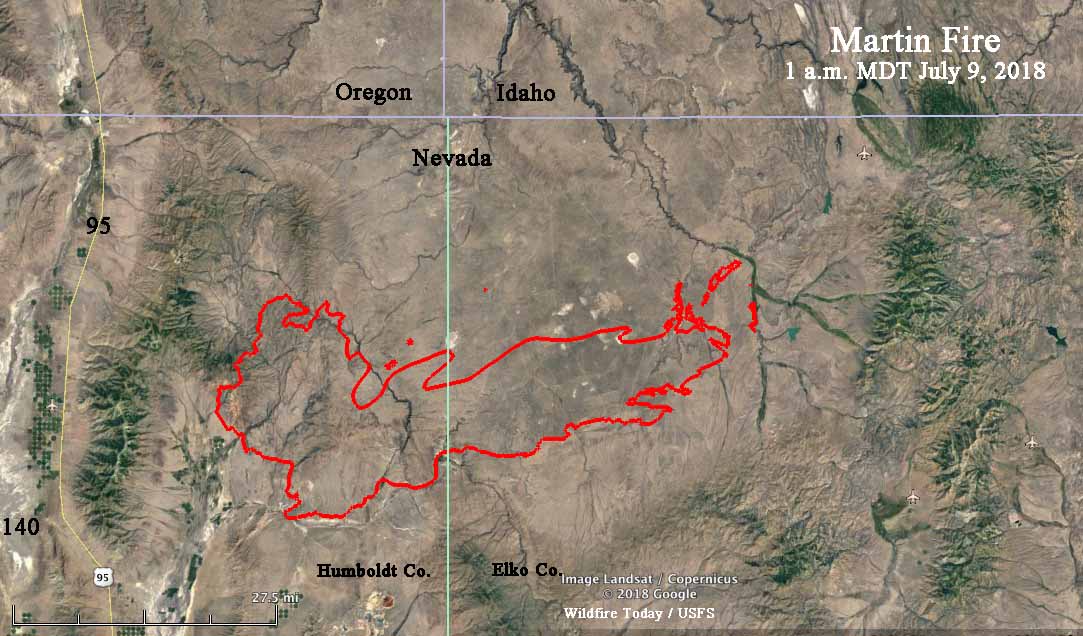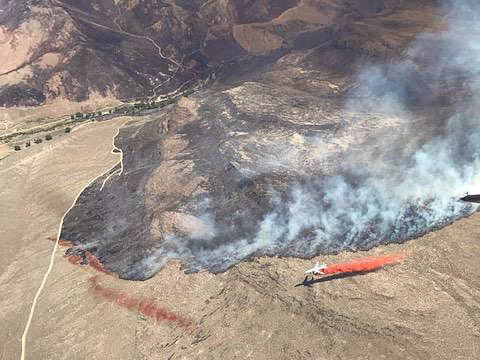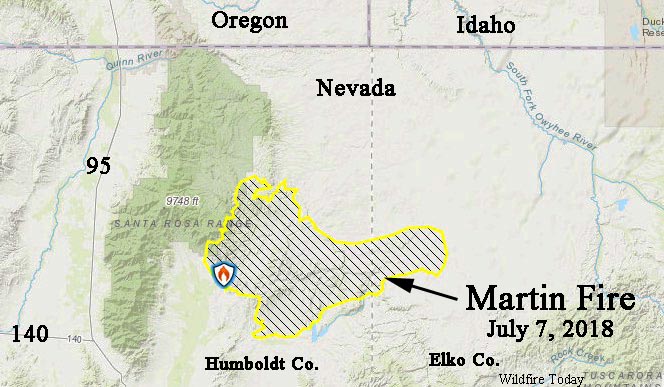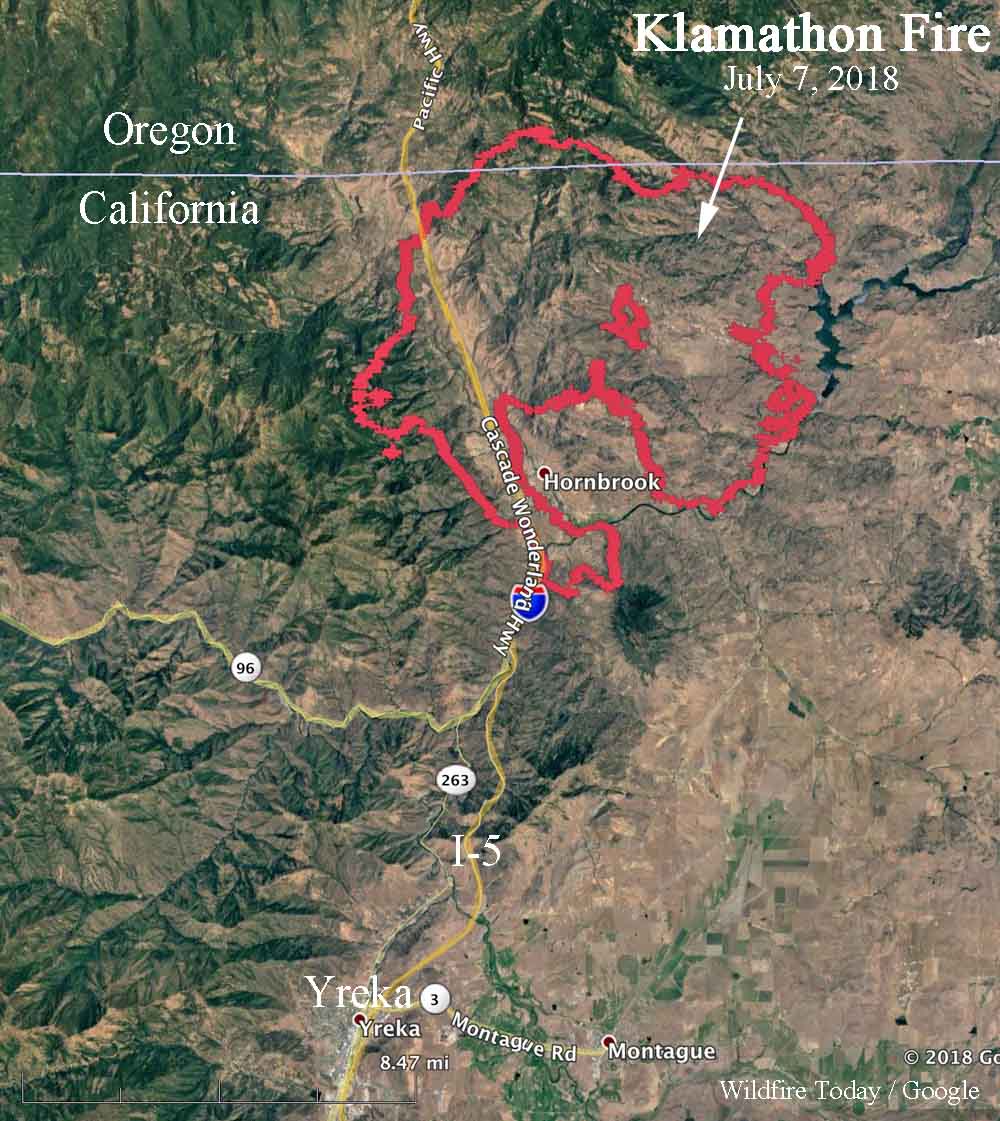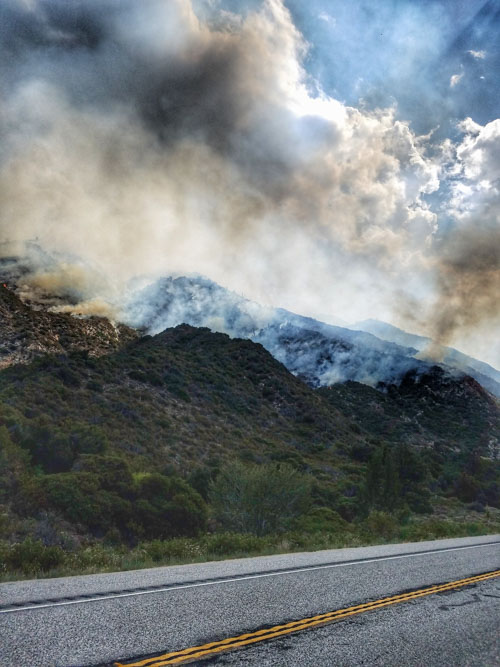Long time fire photographer Jeff Zimmerman sent us these photos he shot at two recent Southern California fires that you did not hear about. Like many, many others, they were successfully attacked by firefighters and contained before growing into major conflagrations.
The photo above as well as the next three, were from the July 6 Hunter Fire off Sylvan road near Lake Hughes. Jeff got some quick shots with a camera phone of U.S. Forest Service and Los Angeles County personnel working at a vehicle fire that got into the brush at 5:20 a.m. during Red Flag Warning conditions. It burned one acre in addition to the vehicle.
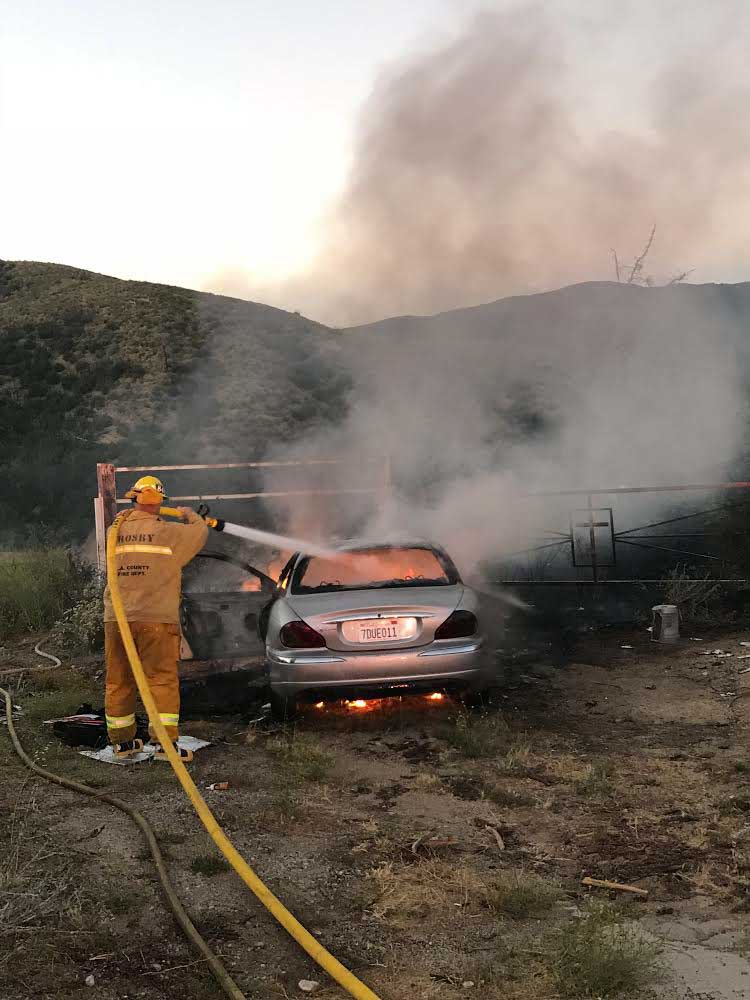
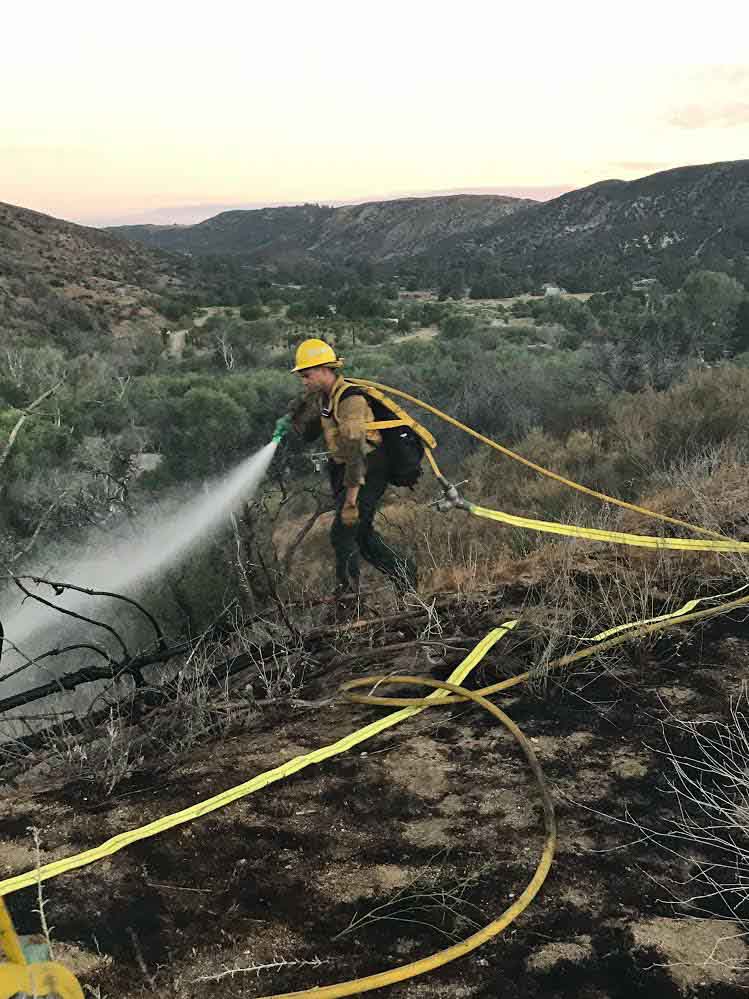
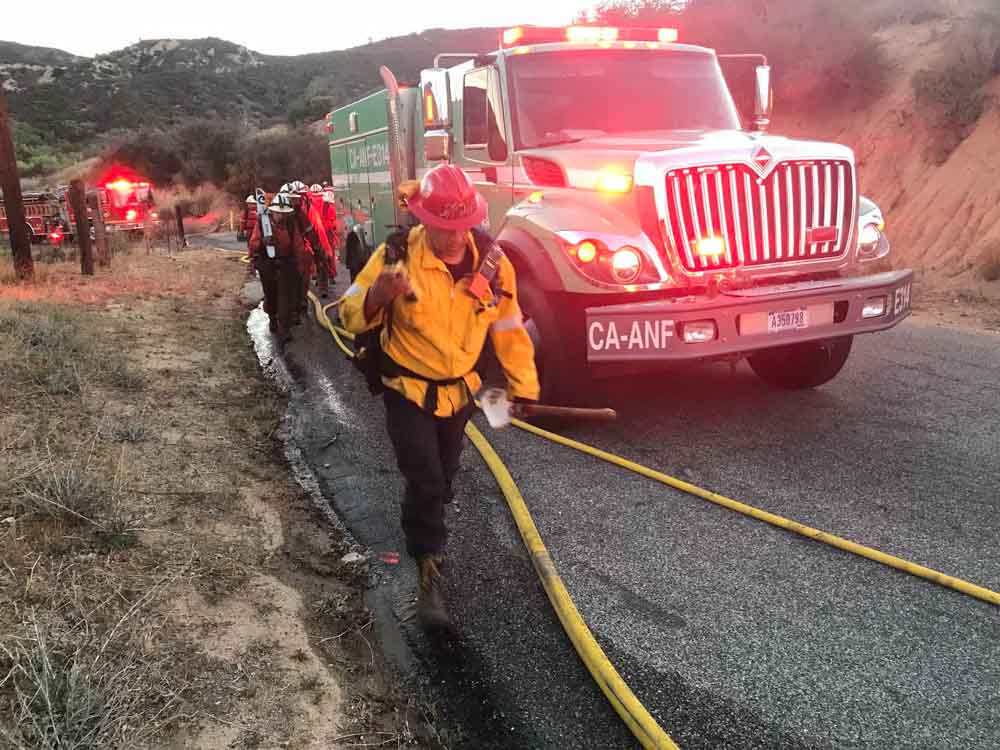
On July 8 Jeff was at a fire in Lebec, California as firefighters from Kern County, BLM, USFS and LA County battled a stubborn vegetation fire. It was reported at 1:35 p.m. along Lebec and Lebec Oaks Road which brought a large response including fixed wing aircraft. No structures were damaged but several rural homes had to have structure protection put in place and large animals were evacuated. Firefighters stopped it at 62 acres. Jeff said extremely high temperatures and very low relative humidity have been a big factor in spawning wildfires across the State this week.
The next four photos are of the fire in Lebec:
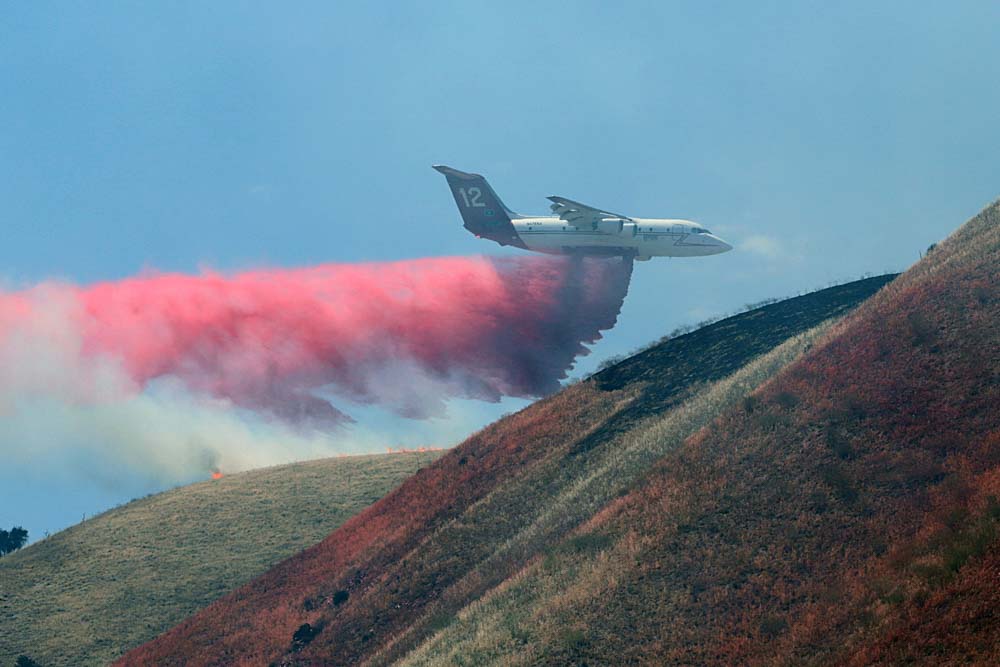
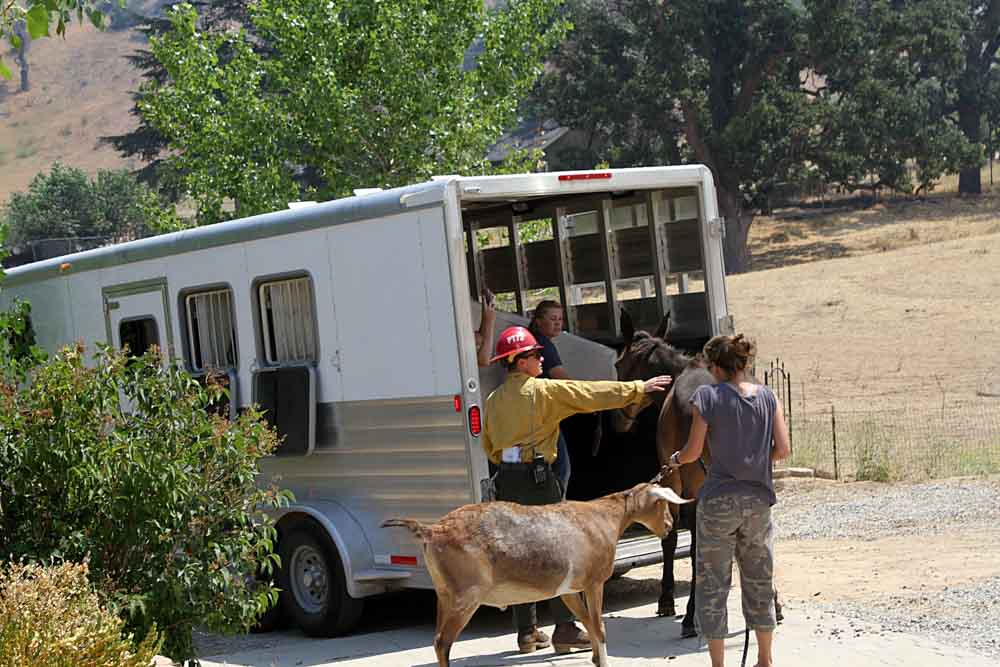
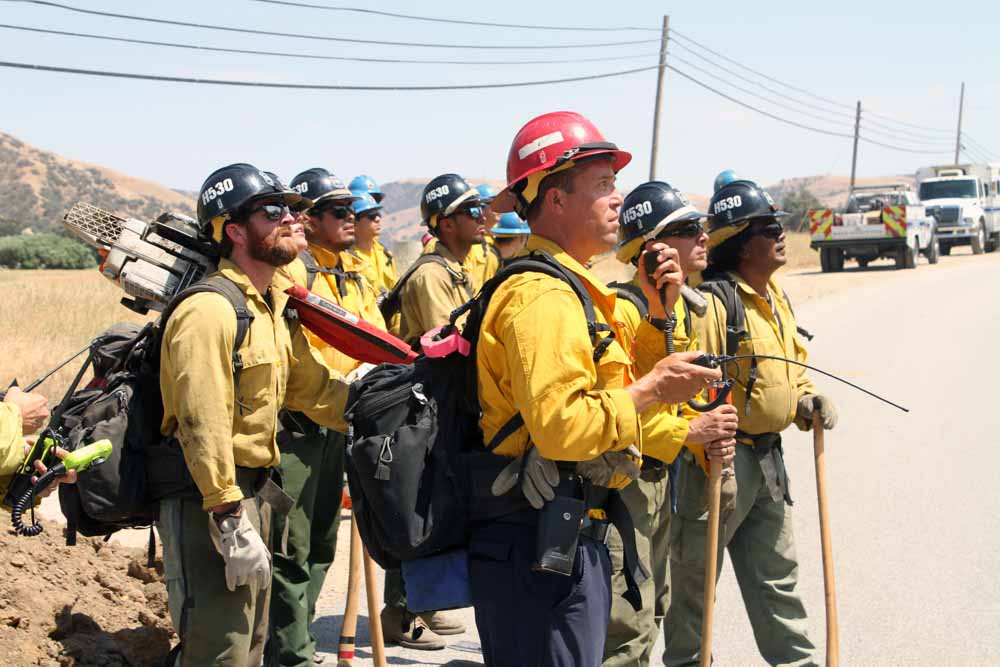
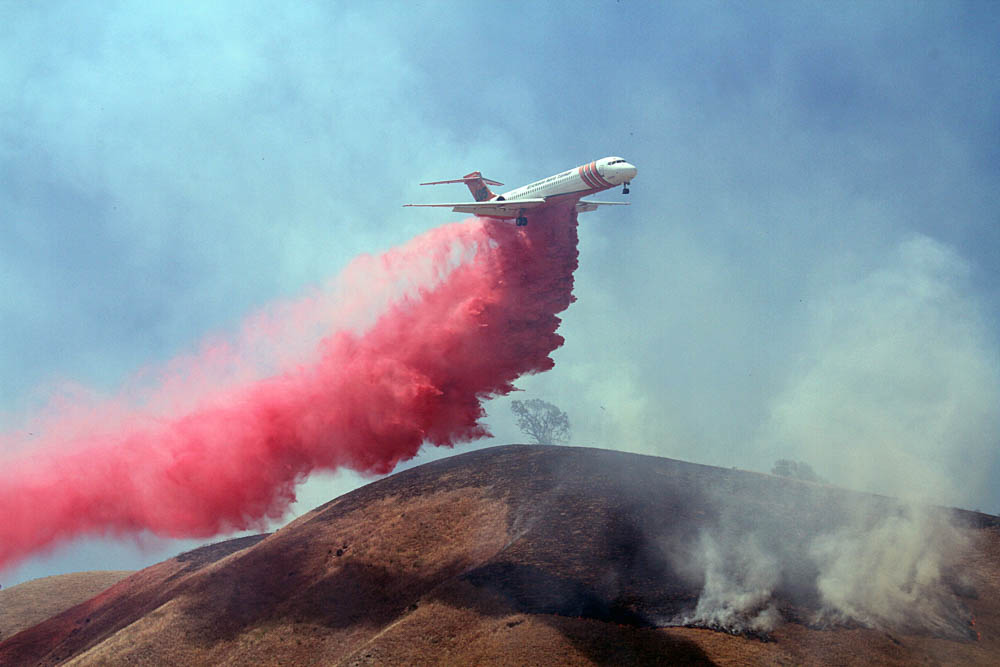
Jeff Zimmerman photographs fires and writes about them, usually from Southern California.




